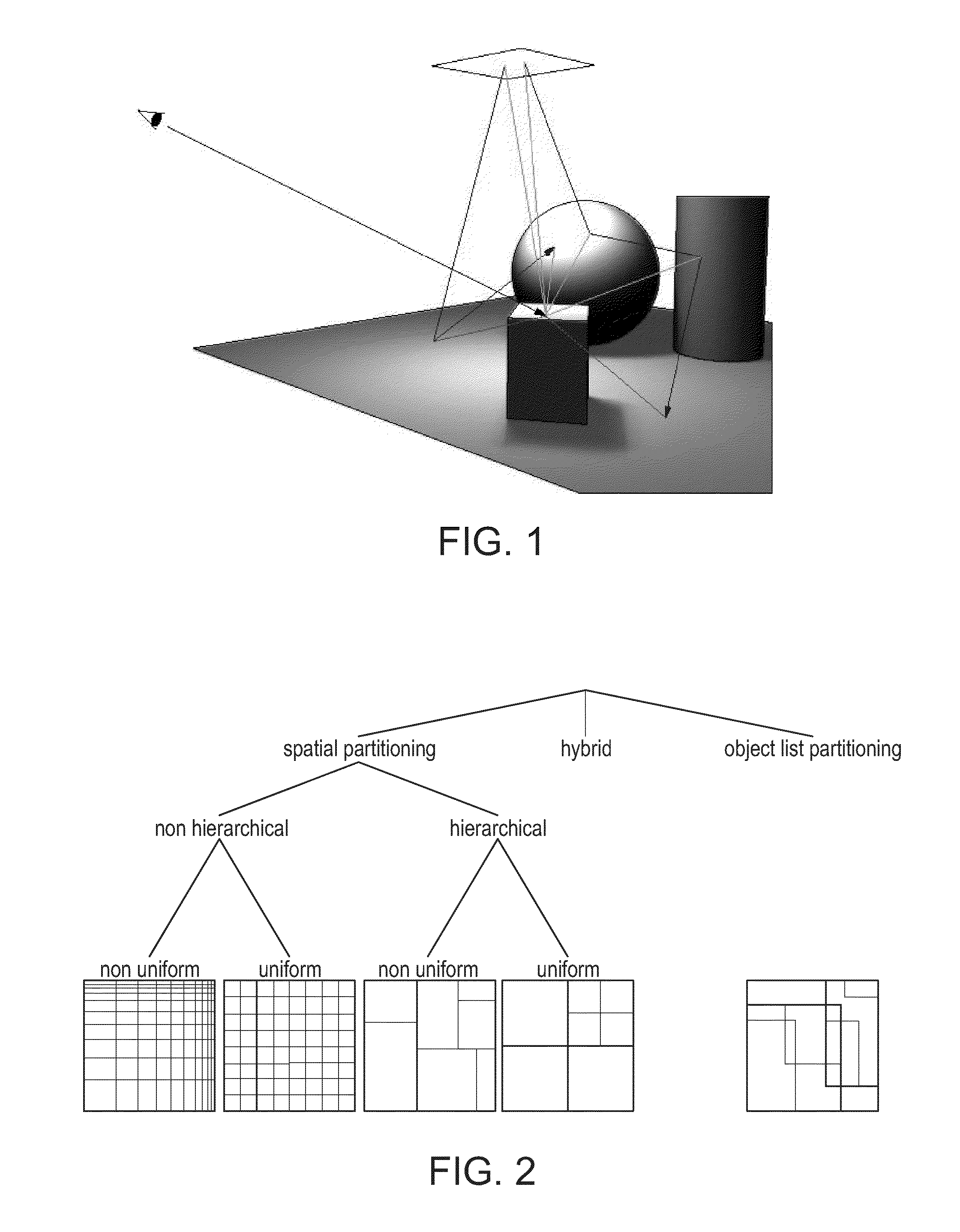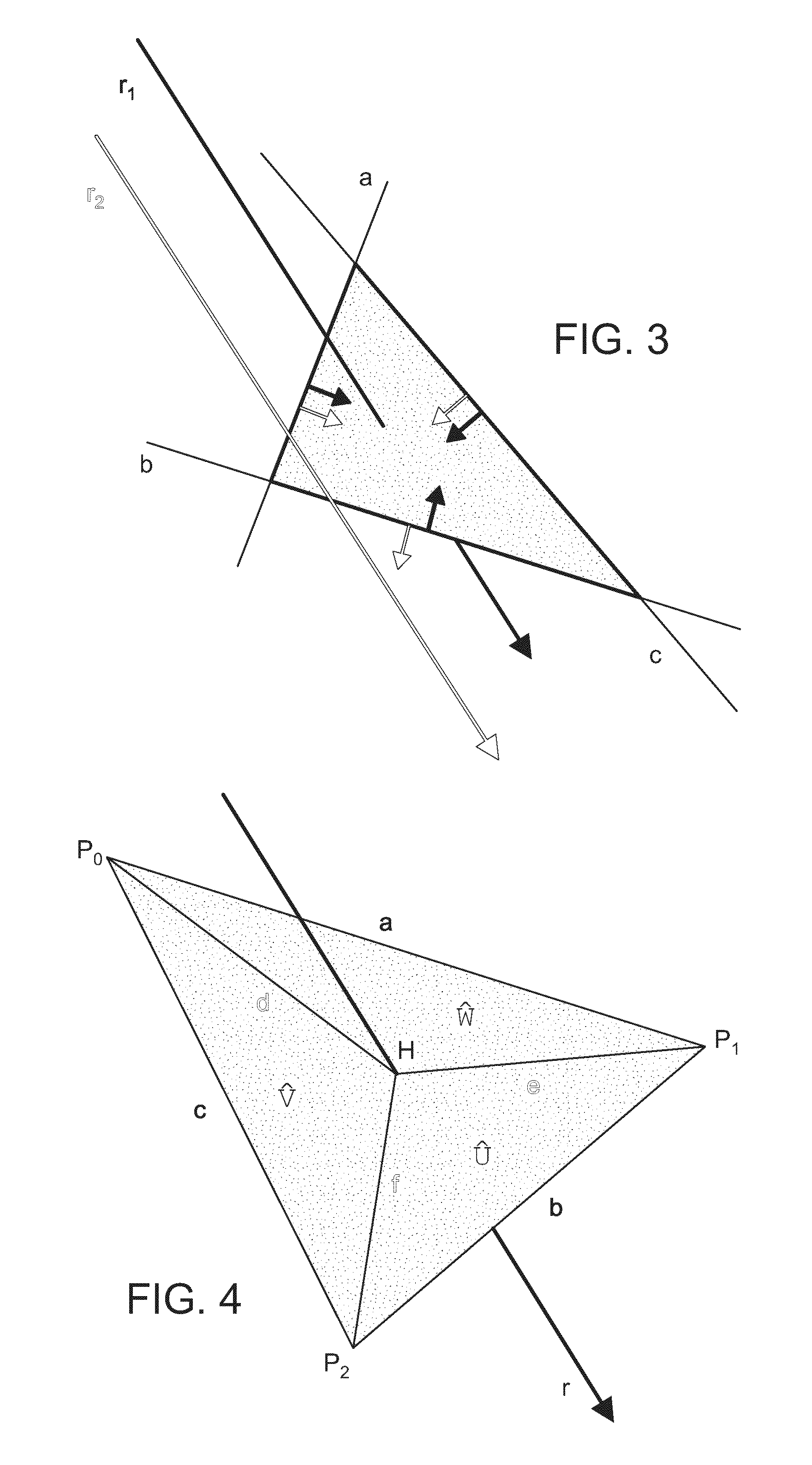Quasi-monte carlo light transport simulation by efficient ray tracing
a ray tracing and simulation technology, applied in the field of image rendering, can solve the problems of slow setup of acceleration data structures, limited ability to process dynamic scenes, and many known limitations and weaknesses of current ray tracing techniques, and achieve the effect of accurate and efficient rendering of images
- Summary
- Abstract
- Description
- Claims
- Application Information
AI Technical Summary
Benefits of technology
Problems solved by technology
Method used
Image
Examples
Embodiment Construction
[0092]Aspects of the present invention provide systems and techniques for quasi-Monte Carlo light transport simulation by efficient ray tracing.
[0093]Photorealistic image synthesis can be described by a path integral. This integral is numerically approximated by summing up contributions of transport paths that connect light sources and sensors, e.g., a camera, a human eye, or the like. The paths are trajectories of Markov processes, the edges of which are straight lines along rays of light and the vertices of which are light-scattering events.
[0094]Aspects of the presently described invention accelerate the simulation of light transport, provide techniques and data structures to efficiently trace rays, and allow the better approximation of the distribution of light by using quasi-Monte Carlo techniques to simultaneously simulate an ensemble of paths instead of single trajectories. The presently described systems and techniques have applications in computer science, mathematics, and ...
PUM
 Login to View More
Login to View More Abstract
Description
Claims
Application Information
 Login to View More
Login to View More - R&D
- Intellectual Property
- Life Sciences
- Materials
- Tech Scout
- Unparalleled Data Quality
- Higher Quality Content
- 60% Fewer Hallucinations
Browse by: Latest US Patents, China's latest patents, Technical Efficacy Thesaurus, Application Domain, Technology Topic, Popular Technical Reports.
© 2025 PatSnap. All rights reserved.Legal|Privacy policy|Modern Slavery Act Transparency Statement|Sitemap|About US| Contact US: help@patsnap.com



